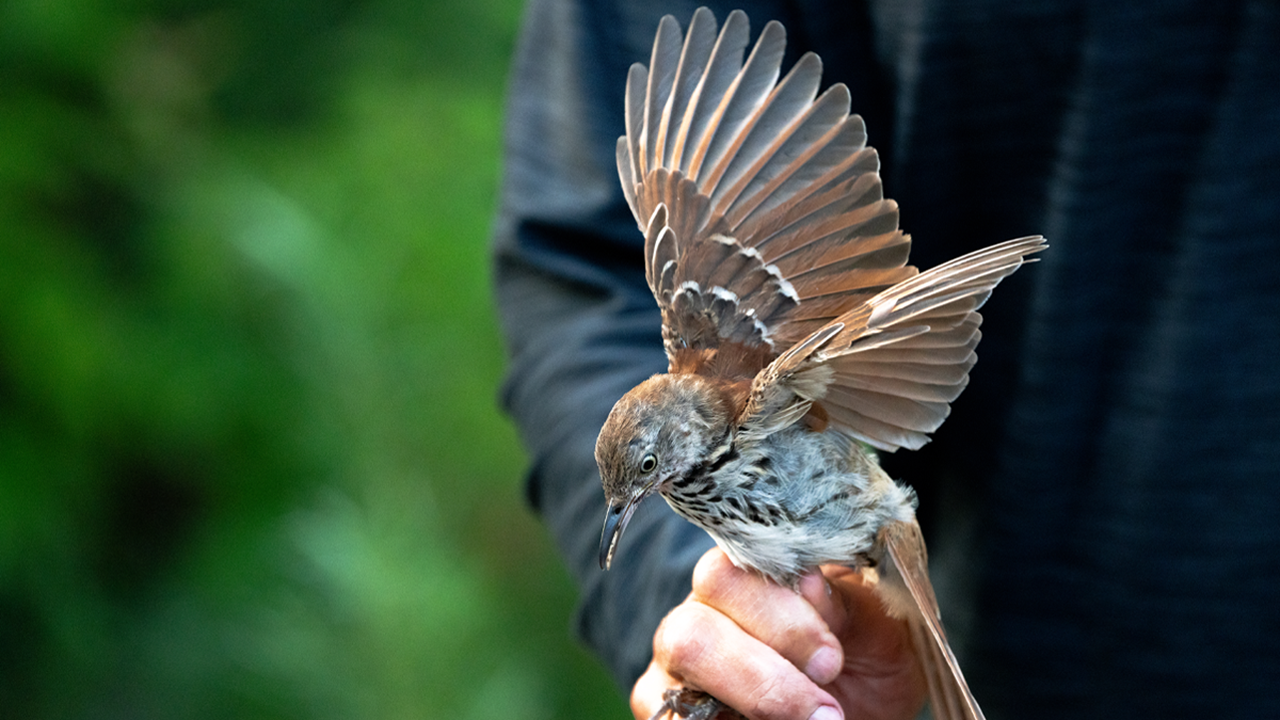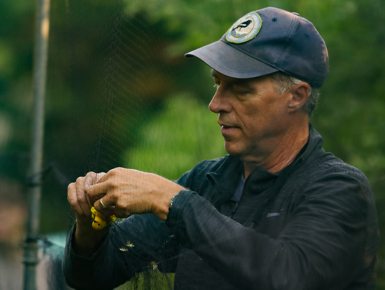Biology Professor Informs Conservation Efforts Through Missouri River Bird Research

“I’m interested in birds and how they use the environment for nesting and migration and how they use their habitat throughout the full annual cycle,” said Swanson. “I’m also interested in how birds change their physiological function to handle changes in energy demands.”
These interest areas have led Swanson to two separate research projects: one that investigates the impact invasive tree species have on birds and another that explores how changing climate patterns influence the physiological responses of birds in different seasons.
Swanson’s research examining the relationship between invasive tree species and birds takes place along the Missouri River downstream from Gavins Point Dam in a section designated as the Missouri National Recreational River by the National Park Service (NPS). Because his research is within this area, Swanson’s projects are funded by the NPS. He has also received funding from South Dakota Game, Fish, and Parks.
The main purpose of the biology professor's research is to investigate how birds utilize the woodland habitat around the river and how they are impacted by changes in that habitat. Assisting Swanson in this research is Mark Dixon, Ph.D., professor of biology, whose research interests include plant ecology and vegetation succession.
“Vegetation succession is very different in this area now that the dams are in,” said Swanson, referring to the Fort Randall and Gavins Point dams. “These changes impact the forest succession there, and we’re interested in how that impacts birds and how these changes have allowed for some invasive tree species to move in.”
Specifically, Swanson, Dixon and their research team investigate two invasive tree species: Russian olive and eastern redcedar. To understand the extent to which these species have populated the area, Dixon employs a combination of analysis techniques, including ground vegetation analysis and satellite measurements to analyze vegetation change.

“Our goal is to determine what impacts these invasive tree species have on birds and how we can best manage the habitats to promote bird biodiversity and success in nesting and migration,” said Swanson.
Generally, invasive species are understood as having negative effects on an environment. However, through his research, Swanson has discovered that this is not necessarily always the case.
“What we’re finding is that those invasive species can actually provide some benefits to birds at certain times in the season,” Swanson said. “We’ve found that some birds have done pretty well nesting in Russian olive trees. Also, the eastern redcedar trees have berries on them that birds can eat, and so we hypothesize that they might have a positive influence on birds in the winter.”
In addition to exploring how bird populations respond to invasive plant species, Swanson also researches how altered climate patterns impact the physiological function of birds.
Funded by the National Science Foundation, this project looks at how birds respond to variable temperatures and temperature fluctuations, which are projected to increase under climate change. As climate patterns change, Swanson seeks to understand how birds adjust their physiology to cope with these changes and how these adjustments might impact bird populations into the future.
“Our winters are getting warmer on average, but we still get periods of really cold temperatures,” said Swanson. “We’re interested in seeing how birds adapt to these greater changes in temperature, specifically measuring metabolic rates and cellular changes in the birds’ muscles.”
To collect these measurements, Swanson brings birds into the lab and exposes them to warm, stable cold and fluctuating cold temperature acclimation treatments for six weeks. Following acclimation treatments, his research group examines how well the birds adjust to the high variability in temperatures and how their metabolic rates and energy usage change.
“Understanding how birds respond to these changes in temperature will help us better predict how bird populations are likely to respond to climate change,” said Swanson. “We’re in the pretty early stages of this research, so we aren’t necessarily able to draw definite conclusions, but in the next stages we hope to examine whether fluctuating temperatures lead to changes in muscle size and levels of muscle growth regulators.”
In all of his research, Swanson is driven by one main purpose: to gain a deeper understanding of ecological and environmental factors along the Missouri River and their impact on bird populations both now and into the future.
“All of these studies can inform the management of bird habitats and wildlife along the river,” said Swanson. “Also, our research will help predict how bird populations are likely to respond to climate change.”
